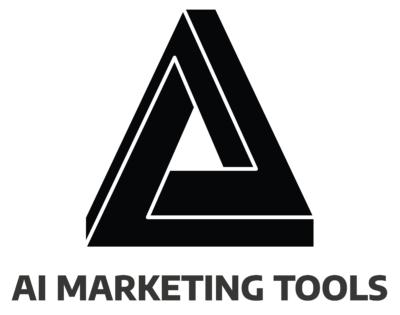
Selecting the right AI-powered competitive analysis tool can be a game-changer for businesses striving to stay ahead. With a vast array of options available, how can marketers determine which features will deliver real value? This guide highlights essential capabilities, including intuitive interfaces, robust data collection, and advanced analytics. By leveraging tools that offer actionable insights, businesses can refine their strategies, track market trends, and outpace the competition. This comprehensive overview addresses key challenges in competitor analysis, equipping users with the knowledge needed to make confident, data-driven decisions.
Key Takeaways
- Effective data analysis is essential for leveraging competitive analysis tools in marketing.
- User-friendly interfaces enhance accessibility and improve team collaboration in data interpretation.
- Customization options in tools can significantly tailor the user experience and improve insights.
- Real-time alerts keep businesses informed about competitor strategies and market changes.
- Comprehensive data collection allows brands to make informed decisions and adapt strategies quickly.
Key Features to Consider When Selecting Competitive Analysis Tools for AI

Selecting the right AI-driven competitive analysis tool requires a focus on key capabilities that deliver meaningful insights. The most effective tools go beyond basic data collection, providing deep analysis that helps businesses refine their competitive strategies.
1. Advanced Data Analysis
AI-powered tools should offer in-depth competitor insights, revealing how businesses leverage emerging technologies to enhance their market positioning. From AI-driven automation to predictive analytics, these insights enable companies to refine their value propositions and better align with consumer needs.
2. Market Trend Tracking
A robust competitive analysis tool should identify shifting industry trends, helping businesses stay ahead of evolving market dynamics. By monitoring competitor strategies, content performance, and customer sentiment, companies can anticipate changes and adapt their approach proactively.
3. User-Friendly Interface
Usability is a critical factor in tool selection. A well-designed, intuitive interface ensures that teams can easily access and interpret data without technical expertise. When tools streamline data visualization and reporting, marketers can focus on actionable insights rather than struggling with complex systems.
Intuitive and Customizable Interfaces for Competitive Analysis

A well-designed competitive analysis tool should prioritize an intuitive interface, ensuring accessibility for both technical and non-technical users. A seamless user experience allows teams to navigate insights efficiently, reducing the complexity of data interpretation.
Customization options further enhance usability by enabling users to tailor dashboards, select relevant metrics, and streamline workflows. By optimizing ease of use, businesses can minimize errors, enhance collaboration, and confidently make data-driven decisions.
Importance of Intuitive Design
An intuitive design simplifies the process of extracting valuable insights, making competitive analysis tools more effective for marketers. A well-structured interface enhances usability by organizing data logically and presenting it in a way that is easy to interpret. When businesses prioritize user-friendly tools, they empower their teams to analyze competitors efficiently, leading to more informed strategic decisions. A smooth and well-designed interface ultimately contributes to stronger market positioning and a competitive edge.
Accessibility for Non-Technical Users
Accessibility is a crucial factor in selecting a competitive analysis tool, as not all users have a technical background. Simplified interfaces make it easier for businesses to extract insights without requiring advanced data analytics expertise.
Tools designed with accessibility in mind allow marketers to focus on strategic decision-making rather than getting bogged down by complicated workflows. By reducing the learning curve, businesses can ensure that all team members can effectively leverage data to refine their marketing efforts.
Customization Options for Users
Customization features enhance the usability of competitive analysis tools by allowing businesses to adapt the platform to their specific needs. Whether adjusting dashboards, selecting key performance indicators, or integrating real-time data sources, customization ensures that marketers can analyze relevant insights more efficiently.
Advanced features such as web scraping and predictive analytics further refine the competitive intelligence process, helping businesses stay agile in a fast-changing market. By tailoring tools to individual workflows, companies can maximize the impact of their competitive analysis efforts and make data-driven decisions with greater precision.
AI-Driven Competitive Data Collection for Strategic Insights

Effective competitor research relies on comprehensive data collection, which is crucial for maintaining market visibility and strategic decision-making. Gathering diverse data points from competitors, integrating multiple data sources, and leveraging real-time updates allow businesses to refine their strategies proactively. By using AI-powered tools, companies can gain deeper insights into customer behavior, industry trends, and competitor movements, leading to well-informed and data-driven decisions.
Types of Data Gathered From Competitors
Competitive analysis tools collect various types of data to uncover competitor strategies and market positioning. These insights help businesses refine their approach, optimize marketing efforts, and stay ahead of industry trends.
Integrations With Various Data Sources
Seamless integration with multiple data sources enhances the effectiveness of competitive analysis tools. AI-driven platforms can aggregate insights from web traffic, search trends, customer sentiment, and social media performance to provide a well-rounded view of competitor strategies.
By incorporating machine learning and automation, businesses can efficiently analyze vast datasets, allowing for more precise decision-making. Tools that connect with social media analytics, third-party data sources, and web monitoring services offer a more holistic approach to tracking market movements and competitive positioning.
Real-Time Updates and Alerts
Real-time updates and alerts provide businesses with timely intelligence, ensuring they can react quickly to competitor shifts and industry changes. AI-powered monitoring tools continuously track market activity, sending automated notifications on emerging trends, competitor campaigns, and pricing adjustments.
Mobile-friendly integrations further enhance accessibility, allowing marketers to stay informed and make strategic adjustments on the go. By leveraging real-time data, businesses can optimize their campaigns, anticipate market changes, and maintain a competitive edge.
AI-Powered Advanced Analytics for Competitive Strategy

Advanced analytics capabilities in competitive analysis tools are essential for refining marketing strategies and staying ahead in a dynamic market. Predictive analytics helps businesses identify emerging trends and adjust pricing strategies, while comparative performance analysis provides a benchmark against competitors.
Visual data representation tools simplify complex datasets, making recognizing patterns and market shifts easier. Together, these features empower businesses with actionable insights, improve decision-making, and enhance customer engagement.
Predictive Analytics for Market Trends
Predictive analytics is a core feature of competitive analysis tools, offering businesses valuable foresight into industry trends and market dynamics. By leveraging AI-driven data analysis, these tools help organizations anticipate shifts in the competitive landscape, enabling them to refine their strategies proactively. Businesses can strengthen their market positioning and maximize revenue opportunities with a data-driven approach.
- Identifies emerging market opportunities.
- Enhances strategic planning through data-driven forecasting.
- Improves business intelligence with detailed trend analysis.
Comparative Performance Analysis
Comparative performance analysis enables businesses to assess their standing in the market by benchmarking against competitors. By utilizing advanced analytics, organizations can track competitor mentions, evaluate market positioning, and compare key performance indicators. This insight helps marketers refine their strategies, optimize workflows, and maintain a competitive edge. AI-powered competitive intelligence tools ensure that businesses make informed decisions based on real-time industry trends and market intelligence.
Visual Data Representation Tools
Visual data representation tools simplify interpreting complex, competitive analysis, transforming raw data into actionable insights. These tools clearly visualize consumer behavior, competitor engagement metrics, and pricing trends across multiple channels. By integrating interactive dashboards and AI-powered visualization techniques, businesses can quickly identify opportunities for growth and areas that require optimization.
- Enhances strategic planning through clear, data-driven visuals.
- Simplifies the understanding of market trends, pricing strategies, and competitor behavior.
- AI-driven visualization tools enable real-time performance tracking for better decision-making.
AI-Driven Competitive Insights for Market Strategy

AI-powered insights are transforming competitive analysis by enabling deeper data-driven strategies. Natural Language Processing (NLP) enhances trend identification through extensive competitor data analysis, while sentiment analysis helps businesses understand consumer preferences and market sentiment. Additionally, machine learning techniques identify emerging opportunities, allowing businesses to benchmark against industry standards and refine their competitive strategies effectively.
Natural Language Processing for Trend Identification
Natural Language Processing (NLP) plays a vital role in competitive analysis by detecting shifts in content strategies, consumer interests, and industry trends. Sentiment analysis gives businesses a real-time pulse on public opinion, allowing them to adjust messaging and marketing efforts accordingly. NLP-driven keyword research also uncovers trending topics, helping companies refine their content and visibility strategies for maximum impact.
Sentiment Analysis of Competitor Activities
Sentiment analysis is a critical component of AI-driven competitive analysis, providing businesses with a deeper understanding of how consumers perceive competing brands. By evaluating consumer reactions, businesses can refine their positioning, enhance brand awareness, and identify gaps in competitor strategies. AI-powered monitoring tools allow marketers to assess public sentiment in real time, helping them stay agile and responsive in a fast-changing market.
Identifying Opportunities Through Machine Learning
Machine learning revolutionizes competitive analysis by uncovering market opportunities and refining data-driven decision-making. AI-powered tools analyze vast datasets to reveal consumer behavior trends, industry shifts, and untapped market segments. These insights enable businesses to optimize their strategies, tailor campaigns more effectively, and maintain a competitive edge. By integrating machine learning with competitive intelligence, companies can anticipate industry movements and maximize their market reach.
AI-Enhanced Reporting and Visualization for Competitive Analysis

Robust reporting and visualization features are essential for turning complex data into actionable insights. Customizable dashboards allow marketers to prioritize key metrics, ensuring a streamlined workflow. Exporting reports enhances stakeholder communication, while automated reporting functions simplify data analysis, providing timely updates on market trends and competitor performance. These features empower businesses to make data-driven decisions with clarity and efficiency.
Customizable Dashboard Layouts
Customizable dashboards in AI-powered competitive analysis tools enable users to structure their views based on specific business needs. By tailoring dashboards to highlight critical competitive intelligence, marketers can focus on essential KPIs, refine SWOT analyses, and align resources effectively. A flexible dashboard improves user experience, allowing teams to react quickly to shifts in market conditions. Regularly updated reports ensure decision-makers have real-time insights for strategic planning.
Exporting Reports for Stakeholders
Exporting reports is a crucial function that facilitates clear and structured communication of competitive insights. By transforming complex data into digestible formats, businesses can present key performance metrics, emerging trends, and competitor movements to internal teams and external stakeholders. These reports enhance transparency and enable informed decision-making across departments.
Automated Reporting Functions
Automated reporting streamlines the process of compiling and analyzing data, saving valuable time for marketing teams. These functions enable businesses to receive real-time updates on industry shifts, competitor movements, and digital performance without manual data entry. AI-powered automation ensures accuracy and efficiency, allowing teams to focus on strategy rather than administrative tasks.
Support and Resources for Optimizing AI Competitive Analysis Tools

Comprehensive customer support and accessible resources are essential for maximizing the effectiveness of AI-powered competitive analysis tools. Users rely on clear tutorials and documentation to navigate complex features efficiently, while fast response times from technical support improve overall usability.
Community and user forums also provide valuable peer-driven insights, fostering collaboration and knowledge-sharing. Together, these elements enhance the user experience and ensure businesses can fully leverage their competitive analysis tools.
Availability of Tutorials and Documentation
Well-structured tutorials and detailed documentation significantly improve the user experience by providing step-by-step guidance on tool functionalities. Clear instructions empower users to navigate complex analytics features with ease, reducing frustration and enhancing productivity.
Platforms that offer extensive learning resources ensure that marketers and analysts can quickly adapt to new features and extract valuable insights without unnecessary trial and error. A strong knowledge base ultimately helps businesses optimize their use of AI-driven competitor analysis tools.
Response Times for Technical Support
Reliable and responsive technical support is a crucial component of any AI-powered competitive analysis tool. When users encounter challenges, quick resolutions minimize disruptions and maintain workflow efficiency.
Timely assistance ensures that marketers can continue extracting insights and making informed decisions without delays. Competitive analysis tools that prioritize fast response times improve user satisfaction and enhance long-term usability, making them more reliable for businesses that depend on real-time data analysis.
Community and User Forums for Peer Support
Community forums and user groups provide an additional layer of support by fostering collaboration among professionals who use competitive analysis tools. These platforms enable marketers to share insights, discuss best practices, and troubleshoot challenges with industry peers.
By engaging in user-driven discussions, businesses can uncover advanced strategies, gain fresh perspectives, and maximize the value of their AI-powered tools. Peer support networks contribute to continuous learning, ensuring users stay informed about the latest industry trends and software updates.
Conclusion
Selecting the right competitive analysis tools for AI is essential for businesses aiming to thrive in a data-driven landscape. Key features such as user-friendly interfaces, comprehensive data collection, and advanced analytics capabilities empower marketers to make informed decisions. Customization options and robust customer support further enhance the effectiveness of these tools, ensuring teams can effortlessly navigate insights. By focusing on these essential features, organizations can refine their strategies and maintain a competitive edge in their respective markets.

Comments